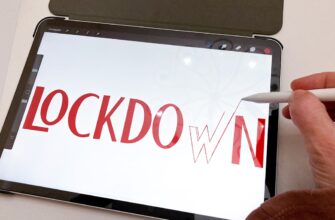- What Does Locking DAI on Compound Mean?
- How to Lock DAI Tokens on Compound: Step-by-Step
- Key Benefits of Locking DAI on Compound
- Risks and Considerations When Locking DAI on Compound
- Maximizing Your DAI Locking Strategy
- Frequently Asked Questions (FAQs) About Locking DAI on Compound
- Is locking DAI on Compound safe?
- How often is interest paid?
- Can I lose my locked DAI?
- What’s the minimum DAI I can lock?
- Do I pay taxes on earned interest?
- How does Compound’s interest rate work?
- Can I use locked DAI elsewhere?
What Does Locking DAI on Compound Mean?
Locking DAI tokens on Compound refers to depositing the stablecoin DAI into Compound Finance’s decentralized lending protocol to earn interest. As a DeFi pioneer, Compound allows users to become liquidity providers by locking their crypto assets in smart contracts. In return, lenders receive cTokens (cDAI for DAI deposits) that accrue interest in real-time based on market demand. This process turns idle stablecoins into passive income generators while supporting the decentralized finance ecosystem.
How to Lock DAI Tokens on Compound: Step-by-Step
- Acquire DAI: Buy DAI stablecoin on exchanges like Coinbase or Binance, or mint it using MakerDAO.
- Connect Wallet: Use a Web3 wallet (e.g., MetaMask) and connect to the Compound app at app.compound.finance.
- Navigate to Markets: Select DAI from the list of supported assets.
- Deposit DAI: Enter the amount to lock and confirm the transaction. Pay Ethereum gas fees.
- Receive cDAI: Your wallet automatically gets cDAI tokens representing your deposit + accrued interest.
- Monitor Earnings: Track interest accumulation in real-time via the Compound dashboard.
Key Benefits of Locking DAI on Compound
- Passive Income: Earn variable APY (historically 1-8%) paid every Ethereum block (~15 seconds).
- Liquidity: Withdraw funds anytime without lock-up periods (unlike staking).
- Security: Audited smart contracts with $0 protocol hacks since 2018 launch.
- DeFi Integration: Use cDAI as collateral for loans or in other DeFi protocols like Uniswap.
- Stability: DAI’s USD peg minimizes volatility risk compared to crypto lending.
Risks and Considerations When Locking DAI on Compound
- Smart Contract Vulnerabilities: Though audited, exploits remain theoretically possible.
- Interest Rate Fluctuations: APY changes based on DAI borrowing demand – can drop unexpectedly.
- Gas Fees: Ethereum network costs for transactions may outweigh small deposits.
- Regulatory Uncertainty: Evolving crypto regulations could impact operations.
- Dependency on DAI Stability: If DAI loses its USD peg, deposited value fluctuates.
Maximizing Your DAI Locking Strategy
Boost returns by combining Compound with yield optimizers like Yearn Finance that automatically shift funds between protocols for optimal APY. For large holdings, diversify across multiple DeFi platforms like Aave or Curve to mitigate platform-specific risks. Always calculate net earnings after gas fees – deposits under $500 may be inefficient. Monitor DeFi pulse for real-time APY comparisons across lending platforms.
Frequently Asked Questions (FAQs) About Locking DAI on Compound
Is locking DAI on Compound safe?
Compound has robust security with multiple audits and insurance funds, but DeFi carries inherent smart contract risks. Only lock funds you can afford to lose.
How often is interest paid?
Interest compounds every Ethereum block (approx. 15 seconds), with APY updating dynamically based on market activity.
Can I lose my locked DAI?
Direct loss is unlikely outside of catastrophic protocol failure. Value risk comes from DAI depegging or severe ETH gas fees during withdrawals.
What’s the minimum DAI I can lock?
No minimum, but consider gas fees – locking under 50 DAI may not be cost-effective.
Do I pay taxes on earned interest?
Yes, most jurisdictions treat interest as taxable income. Consult a crypto tax specialist for compliance.
How does Compound’s interest rate work?
Rates adjust algorithmically based on DAI supply/demand. More borrowers = higher APY for lenders.
Can I use locked DAI elsewhere?
While locked, your DAI isn’t transferable, but you can use cDAI tokens as collateral for loans on Compound or other platforms.








